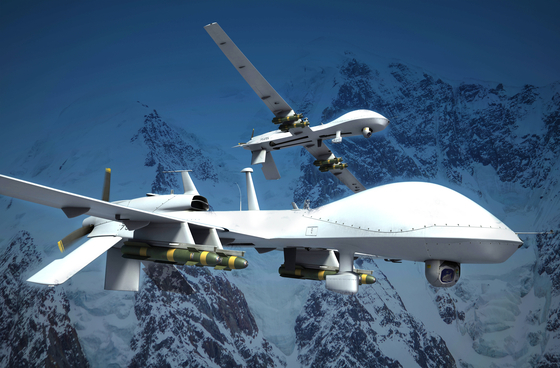[Column] DIU, a model for Korea’s rapid acquisition

Hwa Yu
The author is CEO of Delta One LLC. She can be reached at hwa.yu@delta1llc.com.
Today, rapid advances in science and technology have led to a flood of technologies emerging in diverse fields. While these commercial emerging technologies are helping to improve the quality of our lives, they are also rapidly finding their way into defense, changing the nature of future warfare. Just look at the use of commercial technologies on the battlefield in Ukraine, such as Elon Musk’s Starlink satellite-based internet system to provide continuous battlefield communications, and low-cost commercial drones to attack tanks and other armored units.
The U.S. Department of Defense (DoD) has endeavored for decades to reform the existing defense acquisition system with an interest in finding ways to leverage commercial technologies for military use. Keeping up with the pace of technological advancement has become a necessity, but the defense application of commercial technologies has been limited by the bureaucratic and rigid defense acquisition processes. In particular, the traditional defense acquisition system based on the planning, programming, budgeting and execution (PPBE) process has the disadvantage of taking a very long time from development to fielding of a weapon system and not being able to incorporate rapidly changing technologies in a timely manner. DoD has sought to streamline the defense acquisition process and accelerate defense acquisition for decades, introducing and applying various rapid acquisition mechanisms such as ACTD and JCTD. In 2015, it established the Defense Innovation Unit (DIU) to improve the speed and effectiveness of commercial technology adoption across the DoD and promote the growth of the national security innovation base.
DIU installed under the leadership of the Under Secretary of Defense for Research and Engineering, a powerful position within the Department of Defense, is headquartered in Silicon Valley, the nation’s high-tech industrial base. Proclaiming to be a fast follower, instead of a first mover, by adopting commercial technologies to gain and maintain operational advantages over competitors, DIU is the only defense organization that focuses on accelerating the development of commercial and dual-use technologies to gain and maintain the temporal and technological advantage of the U.S. military. It is designed to be an agile and efficient organization that rapidly identifies promising new technologies that address national security challenges in a variety of technology areas, including artificial intelligence, autonomy, cyber, space, and human-machine interfaces (HMI), to drive rapid prototype production and large-scale fielding.
DIU is characterized by speed and flexible acquisition tools. DIU aims to move from problem identification to prototype contract award in 60 to 90 days (whereas the traditional contracting process normally takes longer than 18 months). The duration of the prototype project is usually 12 to 24 months, and the contractor is selected through a competitive commercial solution solicitation process. Flexible procurement methods are used rather than standard procurement contracts, and subsequent production contracts can be awarded on a non-competitive basis if the prototype is successful.

Through this innovative method, the number of transitions made from prototypes to production or service contracts is increasing year by year and the total value of prototype contracts is growing as well. In 2021, the number of projects that transitioned to formal military procurement totaled eight, but in 2022, the number doubled to 17, and the number and size of contracts are expected to continue to increase. As of FY 2022, the total value of prototype production contracts awarded to commercial companies is $204.8 million, and the total contract ceiling value of the 17 projects that have been transitioned to formal military procurement projects is $1.3 billion.
A recent example of accelerating DoD adoption of commercial technologies is the support for Ukraine. Beginning in February 2022, social media and media outlets began publishing countless images and videos of illegal and provocative activities by the Russian military in Ukraine. Commercial remote sensing companies such as Black Sky, Capella, and Planet Labs provided an unprecedented level of visibility into Russian military activity in Ukraine by providing satellite imagery, which DIU had previously contracted with to develop and demonstrate capabilities to complement existing U.S. intelligence satellites. Working with the U.S. government, these companies provided the Ukrainian Ministry of Defense with the capability needed to enhance battlespace awareness and communications security.
There are some criticisms about DIU for being not transparent in the decision-making process and selection criteria, its tendency to invest in and select unproven technologies, and its disruption of the existing defense acquisition system. Despite these criticisms, DIU is becoming widely recognized for its innovative approach to technology adoption and application and its ability to rapidly commercialize promising new technologies. It plays an important role in keeping the military at the forefront of technological innovation, and its influence on the overall technology adoption process within the DoD is expected to grow in the coming years.
We know that the new Korean government is actively pursuing “to establish a virtuous cycle of building advanced force capability and expanding defense exports” and “to strengthen the U.S.-Korea military alliance through the expansion of defense science and technology cooperation” as national priorities. Hopefully, these endeavors will help strengthen the U.S.-Korea alliance, as the U.S. finds the value of the alliance in acting together.
The combination of force buildup and defense exports is a highly efficient policy goal, but it may not be achievable without the development of strategic industries that deliver advanced weapons systems. This is a lesson that Korea can learn from the United States’ case. While Korea’s defense export achievements are commendable and congratulated, it may be difficult to expect continuous development without the support of foundational technologies. In that respect, it is praiseworthy that Korean defense officials are trying to address this by fostering strategic industries in the era of the Fourth Industrial Revolution.
However, the key to success will likely depend on how quickly the Korean government creates an environment in which innovative technologies can be rapidly incorporated into weapons systems, as shown in the case of DoD. Invigorated applications of Korea’s innovative technologies to the defense sector could become the basis not only for the rapid development of Korean defense technology but also for the expansion of defense science and technology cooperation between the United States and Korea. Therefore, DIU could serve as a model for the Korean defense authorities as they pursue to accelerate defense acquisition and technology adoption to build an advanced force and bolster exports.










with the Korea JoongAng Daily
To write comments, please log in to one of the accounts.
Standards Board Policy (0/250자)